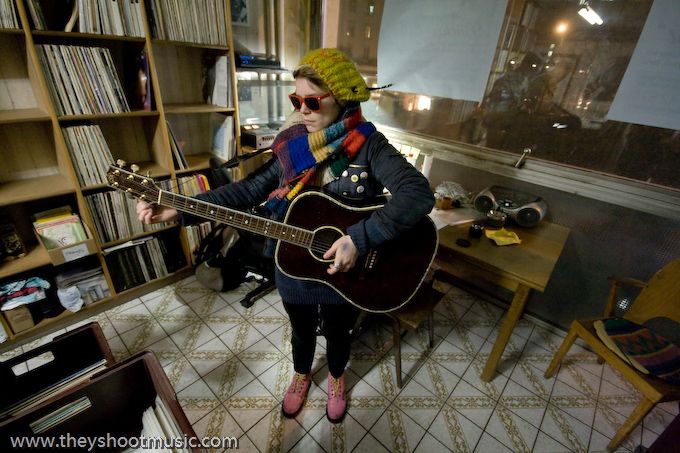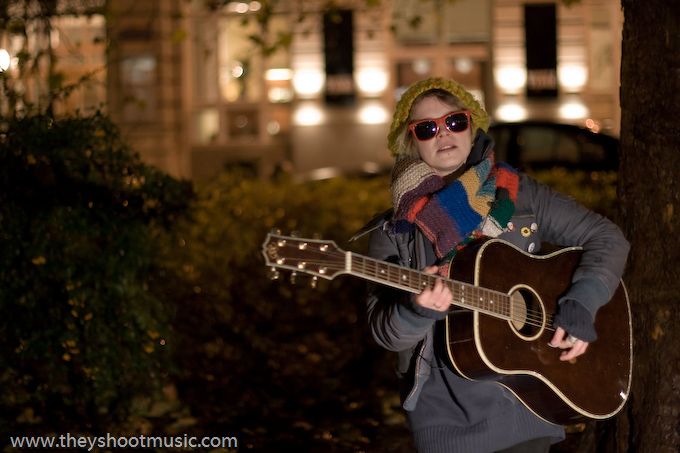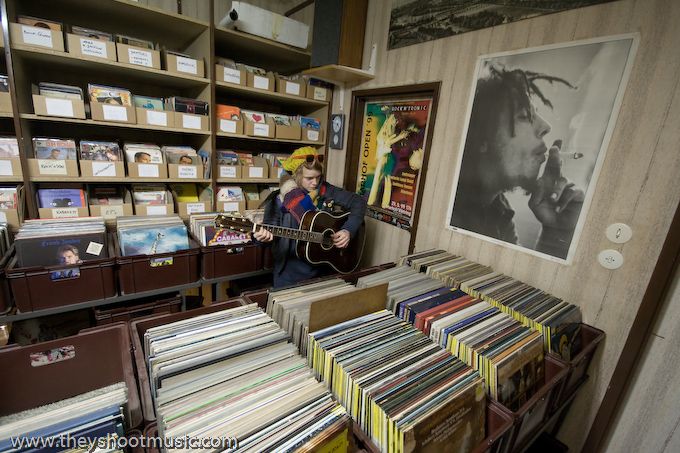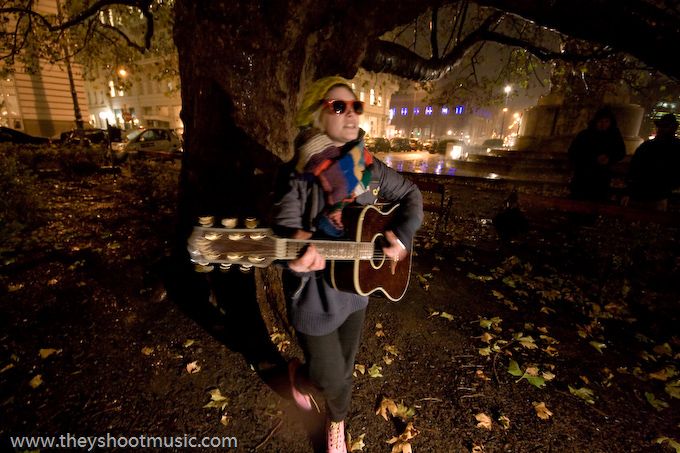Wallis Bird
Antique Book and Record Store, Stubentor, Stubentor, 2009
The shopman in the antique record store is noticeably stunned after Wallis Bird finished her song “Measuring Cities” in his little first-floor music kingdom. In between Mozart records, Falco posters (yes, we are in Austria!) and Rock’n’Roll-LP’s, the haunting rendition of this melancholic, soulful song makes him want to include her records in his collection at once. Wallis Bird did not only win him over, but also the whole audience that watched her show at the Blue Bird Festival (https://theyshootmusic.at/spots/36) the day before. Despite being the opening act, Wallis easily succeeded in electrifying the crowd and was heavily applauded when she got back on stage two hours later for one song during SoKo’s (https://theyshootmusic.at/posts/soko) set. After Wallis did some intense partying in the night, we met up with the 26-year-old Irish songwriter in the late afternoon the next day. As soon as we found a nice spot for her performance of “Blossoms In The Street”, the weather circumstances turned apocalyptic, including sudden cloudburst and thunderstorm during the song. Everybody was soaking wet by the end, but no one cared. Still, reason made us look for shelter in the antique record store to do the second song.
- Photography
- Simon Brugner
- Artist
- Wallis Bird





Antique Book and Record Store, Stubentor
The antique shop Bücher Ernst – located at Dr.-Karl-Lueger-Platz close to the Stubentor underground station – is not only a place for book lovers. Upstairs, there is a wide range of old vinyl records from traditional Viennese music to Psychedelic Rock and Heavy Metal classics. Like the other branch of Bücher Ernst on Gumpendorfer Straße, the small, atmospheric shop is mainly specialised in rare books, maps and engravings. Selling old goods – especially books – has a long tradition in Vienna and started more than 230 years ago, when the rules for booksellers allowed trading with antique books for the first time. The industry quickly developed as secularization and the decline of aristocracy changed the Viennese society at the beginning of the 19th century. At the same time growing interest in sciences raised demand for old books. Despite universities, school, libraries and monasteries being good customers of the antique shops, most of the booksellers had a hard time running their businesses. Many of them suffered from poverty. After several up’s and down’s in the bookselling industry since then, antique shops are nowadays omnipresent in the city and add their share to Vienna’s historic flair.
Stubentor
There is not much left of what could remind of the past importance of Stubentor. Erected as a part of Vienna’s first city wall in the 13th century, Stubentor was one of the main gates to Vienna and – after numerous rebuilds – played a crucial role in defending the city when it was besieged by the Turks in 1683. In 1791, Wolfang Amadeus Mozart’s funeral procession passed the gate on its way to the St. Marx cemetery, although most people didn’t go beyond Stubentor and only few accompanied the coffin of the famous composer to his grave. Nowadays, Stubentor is a both a traffic hub, with underground, tramway, bus-lines and the highly-frequented Ringstraße meeting, and a busy square with Café Prückel, Stadtpark, the modern museum MAK and Cabaret Simpl in the immediate vicinity. The historic Stubentor was – like the rest of the city wall – torn down around 1860 to give space to the Ringstraße circular road. Remains of the stone building can be seen at the entrance to the underground station “Stubentor”.